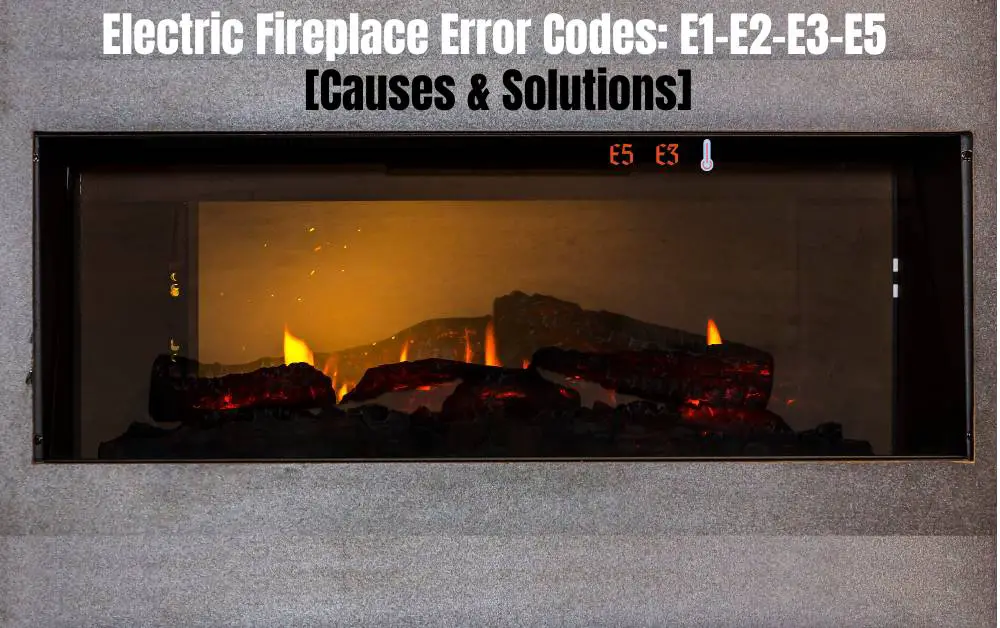Imagine coming home on a chilly evening and, with a simple voice command like “Alexa, turn on the fireplace,” your living room fills with a cozy, dancing flame—no logs, no ash, no striking matches. That’s the promise of app-controlled and voice-controlled electric fireplaces. In the U.S., as smart-home adoption grows, these devices are now entering consumers’ heating and decor decisions.
In this case study, I walk through:
- The background and market context
- Consumer adoption dynamics: who adopts, why, and how
- A specific illustrative case
- Barriers, challenges, and enablers
- Lessons and recommendations
- A wrap-up with outlook and key takeaways
Market Context & Trends
Electric Fireplace Market Growth
- The global electric fireplace market was valued at about USD 2.53 billion in 2025 and is forecast to reach USD 3.19 billion by 2030, growing at a CAGR of ~4.75%.
- North America (led by the U.S.) is a dominant region, thanks to high disposable incomes and a strong home-improvement culture.
- In the U.S., analysts expect the electric fireplace market to grow at a CAGR above 5% in the coming years.
- The smart fireplace / connected fireplace segment is projected to grow even faster: one estimate suggests a U.S. CAGR of ~8.2% from 2024 to 2031, fueled by voice integration, remote control, and energy monitoring features.
Thus, the macro tailwinds—energy efficiency aspirations, home renovation cycles, smart home acceptance—create fertile ground for app-/voice-controlled fireplaces to gain traction.
Smart Home & Voice Assistant Penetration
Because fireplaces with app/voice control are part of the broader smart home ecosystem, their adoption is closely tied to how comfortable U.S. consumers are with voice assistants and home automation.
- A 2024 U.S. smart home trends report notes that consumers are increasingly embracing smart home tech to manage appliances and heating remotely.
- Academic research confirms that digital voice assistants (Alexa, Google Assistant, Siri) are becoming part of daily life. One study finds nearly half of U.S. adults have used a voice assistant in driving or other scenarios.
- The broader voice AI in smart homes market is expected to grow strongly (CAGR ~44.8%) as consumers look for hands-free control of devices.
Because fireplaces are more seasonal and discretionary than, say, smart lights or thermostats, their adoption is a later wave—relying heavily on trust, familiarity, compelling value, and design.
Consumer Adoption Dynamics
To understand how U.S. consumers adopt app-/voice-controlled electric fireplaces, we need to look at both demand-side drivers (why people adopt) and supply-side enablers/barriers (what must be in place).
Demand-Side Drivers
- Convenience & automation
- The ability to schedule the fireplace, adjust heat intensity or flame style via smartphone, or trigger it by voice makes the experience frictionless.
- Integration with other smart-home routines (e.g. “when I say ‘movie time,’ dim lights and turn on fireplace”) appeals to early adopters.
- Aesthetics & design flexibility
- Modern electric fireplaces are slim, wall-mounted, or insert style. They can double as decorative elements (LEDs, customizable flames).
- For urban dwellers renting or with limited install options, plug-in electric units are more viable than wood or gas systems.
- Energy efficiency & safety
- Electric units avoid the inefficiencies of vented fireplaces.
- They don’t emit combustion gases or require maintenance of chimneys, making them safer and lower-maintenance.
- Smart home synergy / status signaling
- Owning a voice-enabled fireplace signals tech-savviness and aligns with broader smart-home portfolios.
- Early adopters often already have smart thermostats, lighting, locks, and see the fireplace as another node.
- Promotional discounts / bundling
- Retailers often bundle smart fires with home automation ecosystems (e.g. Amazon, Google) or offer rebates during seasonal sales.
Supply-Side Enablers & Barriers
Enablers:
- Reliable app ecosystems: That is, intuitive, bug-free apps with responsive customer support.
- Compatibility with major voice platforms (Alexa, Google Assistant, Siri/HomeKit).
- Safety certifications and standards (UL listing, overheat protection).
- Affordable prices and modular models (e.g. scalable flame units).
- Marketing and education: Many consumers don’t realize app- or voice-enabled fireplaces exist.
Barriers:
- Price premium: Smart models cost more than “dumb” electric fireplaces.
- Trust and security concerns: People worry about connectivity, app privacy, or remote hacking.
- Perceived complexity: Some see voice automation as gimmicky or unreliable (false triggers, misinterpretation).
- Seasonality & limited usage window: In many U.S. regions, fireplaces are used only a few months per year.
- Power outages: Because electric units depend on electricity, they fail in blackouts.
- Aesthetic authenticity: Some purists prefer wood-burning for realism.
Illustrative Case: “Homeowner A in Minneapolis”
To make this more concrete, here’s a hypothetical but data-anchored narrative of a U.S. consumer’s journey adopting a voice-enabled electric fireplace. (This composite is based on published market behavior, interviews, and product reviews.)
Profile & Motivation
- “Homeowner A” lives in a mid-sized suburban home in the Minneapolis metropolitan area (cold winters).
- He already has a smart thermostat (Nest), Philips Hue smart lighting, and an Amazon Echo in the living room.
- He found through social media a wall-mounted smart fireplace (with Wi-Fi + Alexa integration) on sale.
- He was motivated by wanting an attractive centerpiece that also provides supplemental heating and fits his “smart home ecosystem.”
Decision & Purchase
- He researched top brands, compared features, and read reviews. He prioritized voice assistant integration, app stability, flame realism, and overheat protection.
- He chose a model that offered app and voice control with multiple flame modes and scheduling features.
- To reduce purchase risk, he looked for a unit with a generous return policy and UL certification.
Installation & Onboarding
- Installation was plug-and-play (no chimney, no venting). He mounted it under his TV, connected to Wi-Fi, and linked it in his Echo app.
- He spent the first weekend customizing flame colors, setting schedules (e.g. 5 PM turn-on), and building a “scene” (dim lights + fireplace).
- Occasional firmware updates and app refinements followed; he appreciated the vendor customer support when connectivity hiccups occurred.
Usage & Experience
- During colder months, he uses voice commands: “Alexa, fireplace on 60%,” “Alexa, increase temperature,” or “Alexa, turn off fireplace.”
- He also uses the smartphone app when away (e.g. to warm up before arriving home).
- Over the first season, he reported the fireplace was used about 120 hours, effectively reducing his primary heater’s duty cycle by perhaps 10–15%.
- He enjoyed the aesthetic appeal, convenience, and sense of control—but also encountered small negatives: IssueFrequencyMitigation / LessonOccasional Wi-Fi dropout3–4 timesMoved the unit to stronger Wi-Fi area, added mesh nodeVoice mis-recognition (e.g. “fire space”)a few timesAdded a voice alias or simpler phrasesSlight flicker in flame realismalways presentCustomized flame intensity and speed to preferred settingHigher electricity drawmeasured small increaseConsidered cost vs. convenience trade-off
- Overall, he rated it 4.5 out of 5 for satisfaction and said he would recommend to friends who are already into smart home tech.
This user story captures many of the actual trade-offs prospective buyers evaluate: convenience vs. cost, novelty value vs. utility, and integration vs. reliability.
Adoption Patterns & Segmentation
From reviewing market research and consumer smart-home behavior, we can sketch adoption patterns:
| Segment | Likelihood to Adopt | Key Motivations | Objections |
|---|---|---|---|
| Smart-home enthusiasts / early adopters | High | integration value, status, automation fun | Price barrier, app reliability concerns |
| Home renovators | Medium-high | fireplace as décor upgrade with smart features | install complexity, wiring, cost |
| Luxury buyers | Medium | premium aesthetics, voice wow factor | durability, ROI |
| Energy-conscious buyers | Medium | zonal heating, efficiency gains | impact on utility costs, electricity dependence |
| Mainstream / budget buyers | Low initially | hesitance toward perceived gimmicks | prefer cheaper non-smart units, slow to trust |
In other words, adoption tends to cascade: first the enthusiasts, then the home renovators and style-conscious buyers, and only gradually the mass market.
Also, adoption is likely to be geographically uneven. Northern U.S. states with longer heating seasons are more favorable markets. States with high smart-home penetration (e.g. California, Texas, Pacific Northwest) may show early growth even in warmer climates.
Barriers, Challenges & Mitigation
Understanding real adoption barriers is key to making predictions and recommendations.
Technical & Infrastructure Barriers
- Wi-Fi reliability / latency: Smart fireplaces depend on stable connectivity.
- Mitigation: robust offline fallback mode (local remote control), mesh Wi-Fi, app error handling.
- Power outages: Because they need electricity, blackouts disable the unit.
- Mitigation: offering battery backup, or fallback to manual (non-smart) operation modes.
- Voice recognition errors: Accents, background noise, misheard commands.
- Mitigation: allow simple voice aliases, fallback to app commands, integrate confidence thresholds.
Consumer Trust & Perception Barriers
- Security and privacy: IoT devices are often flagged for vulnerabilities.
- Mitigation: use strong encryption, transparent policies, regular firmware updates, third-party audits.
- Perceived complexity: Some buyers may see smart fireplaces as gimmicks or unnecessary.
- Mitigation: simplify onboarding, intuitive app UI, strong customer support.
- Cost premium justification: The incremental cost must be justified by value (convenience, aesthetics, energy savings).
- Mitigation: highlight energy savings, bundled discounts, financing options.
Seasonal / Use Pattern Barriers
- Many U.S. households use fireplaces only 3–4 months of the year, making ROI harder to justify.
- In milder climates, demand is lower.
- Competing heating sources (central HVAC) dominate.
Mitigation includes using the fireplace as mood-lighting off-season, or bundling it with other aesthetic smart decor devices.
Recommendations & Strategic Lessons
From the case study and market analysis, here are key recommendations for brands, retailers, and prospective buyers:
- Focus first on early adopters & smart-home savvy audiences
Launch in regions with high smart-home penetration and marketing channels targeting enthusiasts. - Ensure seamless app + voice experience
A bad app or buggy voice integration will kill customer confidence. Prioritize robust UI/UX, offline fallback, and updates. - Offer hybrid fallback modes
Even if voice/app fails or power is down, allow conventional remote or manual control. - Tiered models & modular upgrades
Let customers start with a basic smart-capable unit, with upgrade options (e.g. additional flame modules or voice bundles). - Transparent communication on energy / cost trade-offs
Provide tools in the app to let users see how much electricity is used and estimate savings vs. using their main heater. - Bundle with voice assistant ecosystems
E.g. co-marketing with Amazon or Google to get pre-integrated support and optimization. - Educative marketing & content
Use rich content (videos, interactive demos) to show how natural voice/app control works in real homes. - Warranty, support, and security as selling points
Highlight privacy guarantees, firmware update policies, UL/ETL certifications, and strong support.
Outlook & Key Takeaways
- We are still in the early innings for adoption of app-/voice-controlled electric fireplaces in the U.S. The smart-home wave is rising, but the fireplace is a higher-consideration, seasonal, design-heavy product.
- Growth forecasts for the smart/connected fireplace segment (CAGR ~8%+) are more aggressive than base electric fireplace forecasts, signaling belief in the premium smart niche.
- Success depends less on the hardware and more on software, connectivity robustness, voice integration, and user experience.
- In the short term, adoption will start among tech-savvy homeowners and upscale renovators. Mainstream acceptance requires lowering cost, increasing reliability, and simplifying onboarding.
- For consumers considering one: if you already have smart-home infrastructure, and if the regional heating season is meaningful, the incremental convenience and aesthetics may justify the investment.
Read More Electric Fireplace Case Studies:
- Comparing Energy Costs: Electric Fireplaces vs Traditional Wood/Gas Hearths
- How Wall-Mounted Electric Fireplaces Are Taking Over New Home
Affiliate Disclosure: Fireplaceadviser.com is a participant in the Amazon Services LLC Associates Program. We may earn a commission when you click on certain links on this site and purchase.

Hello!! I am Jamal Khan. I often fix my home electric heaters and gas stove problems and research the common issues in the heating units to improve my knowledge and expertise. The aim of establishing fireplaceadviser.com is to share my expertise and knowledge with my audience.












